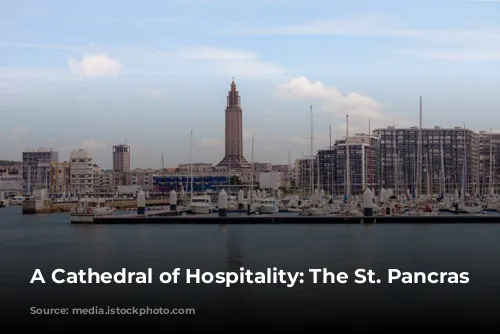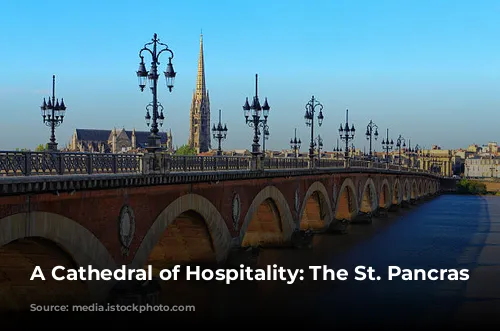Step into a grand Victorian masterpiece transformed into a modern haven, the St. Pancras Renaissance Hotel. This London landmark, once a bustling hub of travel and elegance, has been meticulously revived, breathing new life into a forgotten treasure.
A Legacy Restored
The Midland Grand, built in 1873, was a bold statement of Victorian architectural ambition. Designed by the renowned Sir George Gilbert Scott, the Gothic Revival structure resembles a majestic cathedral with its intricate arches, towers, and ornate details. The hotel’s original grandeur, however, proved controversial, with some critics deeming it excessive. Despite the initial debate, it flourished as one of London’s most popular and prestigious hotels until the 1930s.
Decades of neglect and disuse followed, threatening the building’s very existence. Fortunately, the Midland Grand received a second chance when the St. Pancras railway station, home to the Eurostar train service, was relocated to the site. The hotel’s future was secured, and a meticulous renovation was launched, transforming it into the St. Pancras Renaissance.
A Modern Masterpiece
The St. Pancras Renaissance is more than just a historic renovation; it’s a harmonious blend of old and new. The building’s architectural heritage is celebrated and intertwined with contemporary design. A former taxi rank has been transformed into a stunning lobby, bathed in natural light filtering through a glass roof. The lobby’s grandeur is enhanced by the juxtaposition of modern materials like granite and Yorkstone alongside the intricate details of Scott’s original design.
Inside the St. Pancras Renaissance, a sense of wonder awaits. A former booking office now houses a cozy bar and restaurant, featuring exquisite paneling adorned with 173 meticulously carved flowers. The hotel’s centerpiece, the Grand Staircase, is a breathtaking sight. This cantilevered masterpiece, adorned with wrought-iron balustrades, soars through three floors to a vaulted ceiling.
A Nod to History
The renovation team has paid meticulous attention to preserving the building’s history. The deep-red walls of the stairwell recreate a decorative scheme from 1901, while elaborate peacock-motif stencils, long hidden beneath layers of white paint, have been restored to their former glory. The hotel’s commitment to historical preservation has been lauded by experts, including Paddy Pugh, London’s planning director for English Heritage, who describes the renovation as “extraordinary” and “superb.”
The St. Pancras Renaissance isn’t just a hotel; it’s a living museum of Victorian grandeur. With its restored grandeur, it offers a glimpse into a bygone era, while its modern amenities ensure a comfortable and luxurious stay.
A Journey Through Time
The hotel’s design seamlessly blends history with modernity. Modern furnishings and amenities complement the Victorian architecture, creating a unique and unforgettable experience. While some rooms retain the original character, with soaring ceilings and intricate details, new wings offer contemporary accommodations.
The St. Pancras Renaissance, situated near the Euston and King’s Cross railway stations, provides a convenient location for those traveling to mainland Europe or northern England. However, it’s not just a convenient stop; it’s a destination in itself, a captivating blend of history, architecture, and modern comfort.
Step into the St. Pancras Renaissance and discover the captivating allure of a bygone era, beautifully preserved and reborn.














